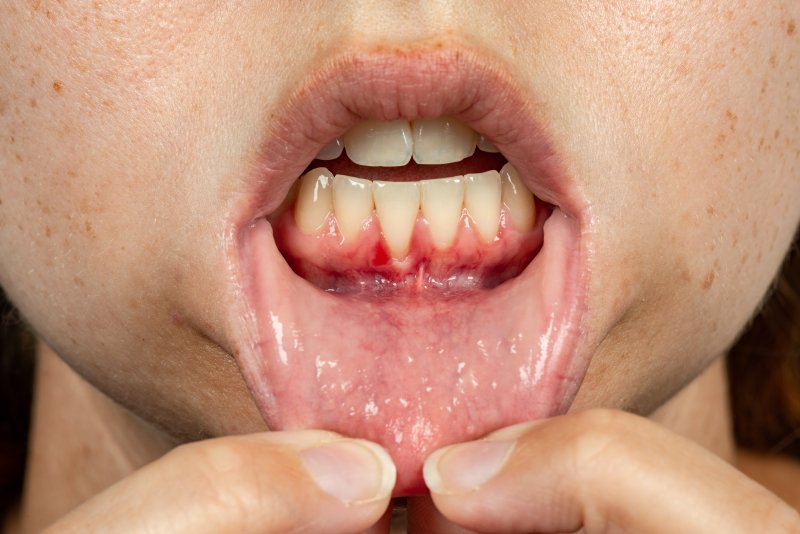How Gum Grafting Can Treat Gum Recession
September 5, 2024

Have you been told by your periodontist that you need a gum graft? Gum recession can result from a variety of issues, one of the most common being periodontal disease. There is no need to panic. A gum graft could be necessary to protect your teeth from the damaging effects of gum recession. Continue reading to learn more about gum grafting and how it can help restore the health of your smile!
What Causes Gum Recession
The gum tissue can start to recede for a variety of reasons. Here are the most common culprits:
- Genetics: Some people are born with gums that are more prone to recession.
- Vigorous Brushing: If you are brushing too hard or using a toothbrush with stiff bristles, you could experience gum recession.
- Trauma: If you’ve experienced an injury to your mouth, this can cause the teeth to loosen and the gums to recede.
- Periodontal Disease: As gum disease progresses, becoming more severe, irreversible gum recession can occur.
How Do Gum Grafts Work?
There are three different types of gum grafting. They include:
- Connective-Tissue Grafting: This is the most common method used for treating root exposure. For this procedure, a flap of skin is cut at the roof of the mouth so that the tissue under the flap (subepithelial connective tissue) can be removed. This is then stitched to the gum tissue surrounding the exposed root.
- Free Gingival Grafting: Just like connective-tissue grafts, free gingival grafts use tissue from the root of the motu. However, instead of making a flap to use the tissue beneath, a small amount of tissue is removed directly from the root of the mouth before being attached to the gum area being treated. This is more commonly used for those who have thin gums and therefore need additional tissue.
- Pedicle Grafting: Instead of taking tissue from the roof of the mouth, it is taken from gum tissue near the tooth that needs to be addressed. This “pedicle” flap is only partially cut away so an edge remains attached. The gum is then pulled over or down to cover the exposed root and sewn into place. The procedure can only be completed in people who have plenty of gum tissue near the tooth.
If you’ve experienced gum recession, a gum graft could be the solution to restore the health of your smile. By working with your periodontist, you can put together a plan to meet your needs.
About the Author
Dr. Andrew Barnett is an experienced periodontist serving the Dallas area. After earning his Doctor of Dental Medicine degree from the University of Pittsburgh, he designed to specialize in surgery, so he completed his residency and earned his Master of Science and Certificate in Periodontics from the University of Michigan. Today, he is a board-certified periodontist and a proud member of the American Dental Association, Texas Dental Association, and the American Academy of Periodontology. To learn more about gum grafting or to schedule an appointment, visit his website or call (214) 691-2614.
No Comments
No comments yet.
RSS feed for comments on this post.
Sorry, the comment form is closed at this time.
